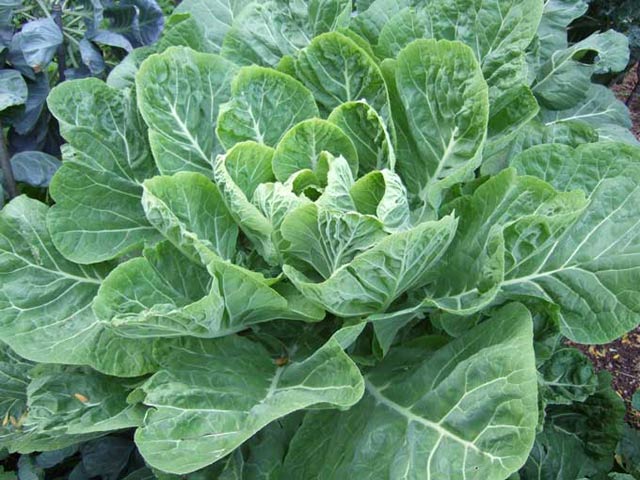Planter-Box Gardening
Growing Greens in Small Spaces

One of the ways for retirees to cope with reduced income and an empty nest is to downsize. My family grew up on many acres of land devoted to orchards and my grandfather and father always allotted an acre or so to growing our own food, as well. So when my folks retired, they “sold the farm” and moved into a modular home. Not only was their house now much smaller; their land was also drastically reduced. In spite of that, my dad commenced to garden in the space available.
He now harvests fresh vegetables or greens almost every day of the year in a plot of land measuring a mere 18 feet by 22 feet. When he moved in, it was covered with plastic mulch and topped with large pea gravel: a pretty desolate place. He raked back the gravel, cut through the plastic and dug down to create several raised beds for vegetables and flowers, and even planted four dwarf citrus trees. In between these larger areas, he set up five EarthBoxes (earthbox.com)—a self-contained gardening system—that he had already found productive and efficient for selected vegetables.
With careful planning, he has been able to rotate edible crops through every month of the year. His preparation begins in September, when he harvests the last of the tomatoes and eggplants in the EarthBoxes. These self-contained planters then need a rejuvenation of the soil mix, which includes the addition of fresh composted manure and other soil mix to replace what has been lost through the removal of the spent plants and their roots. When the boxes are ready, he plants seedling cauliflower, broccoli, and cabbage plants.
Next, it’s October, and in the raised beds that he created, beans and cucumbers, a zucchini or two, and a few perennial herbs are also coming to an end. The soil is again turned and amended. They are now ready to receive onion starts, seeds of peas, turnips, and other root crops such as beets and carrots. In the cool, but usually sunny days of November, Dad will sow lettuce and other salad greens (using a mesclun mix) and plant parsley and cilantro. All of these plants grow well in the coolest season. A light frost or two (Dad lives in the Central Valley of California) will usually not kill them, just slow them to a snail’s pace of growth to resume whenever sun and warmth coincide.
In January, seed potatoes will also go into the regular beds, and sweet pea seeds will be sown along the back of the small shed to grow up a simple string trellis. These fragrant flowers will be picked and passed to friends and colleagues to grace their tables and workstations. It’s still pretty cool in Central California in February, but more herbs can be planted, and the onions have grown enough to pull a few to add to salads. All the while, cauliflower and broccoli stems have been maturing. The central stems make a fine meal, but the slender branches that continue from the base after they are harvested keep growing and are just as flavorful and packed with vitamins and minerals. Once they have exhausted themselves, the plants are resigned to the compost pile and replaced with starts of tomatoes, peppers, and eggplants. The first of the string beans are also going into a raised bed as March comes to an end.
April is the first of the golden months. Lots to harvest, and still more to plant. Dig potatoes, clip some greens, and pull whole heads of lettuce while thinking ahead to harvests of cucumbers that are planted now along with a second planting of beans. May and June bring more salad ingredients: onions, lettuce, greens, the last of the peas. The first of the tomatoes begin to color up, as well. The sweet peas are done, so a planting of zinnias or other heat-loving summer flowers can replace them. July and August provide an abundance of tomatoes, peppers, eggplant, cucumbers, and more. Even in this small garden, Dad says, “I have enough for my own use and often enough to give away.” His pepper relish, with tomatoes and peppers, is canned and passed out as host gifts to an avid audience. And then, “Start all over again.”



